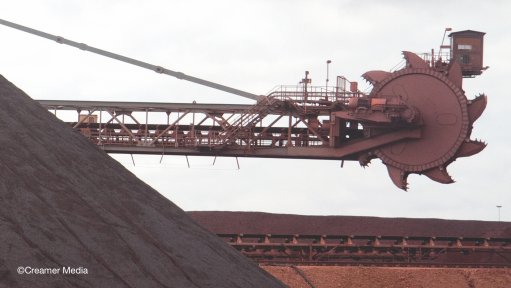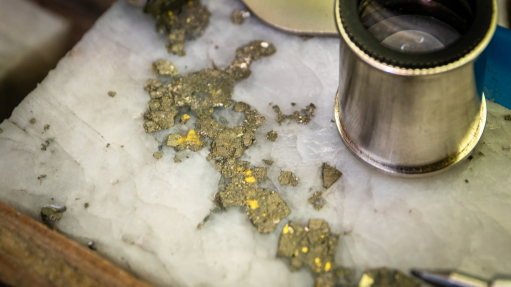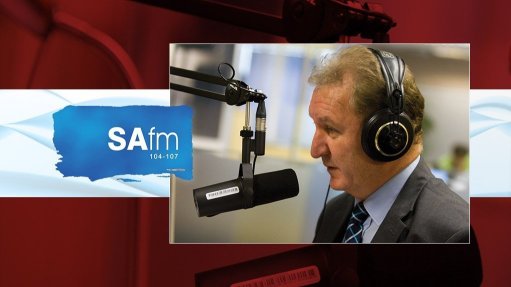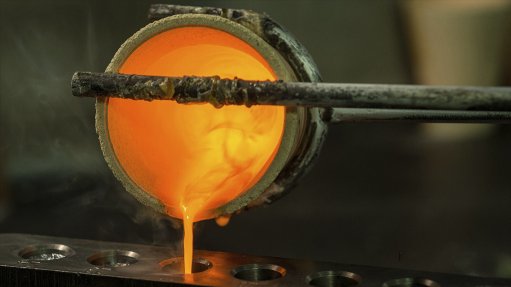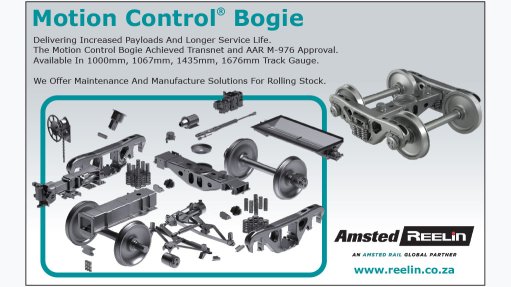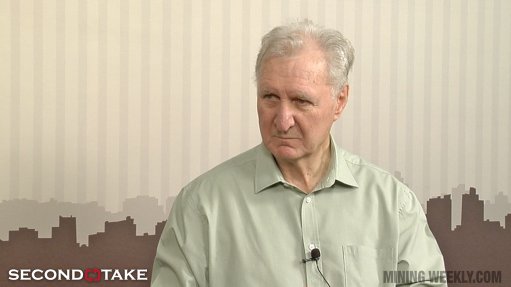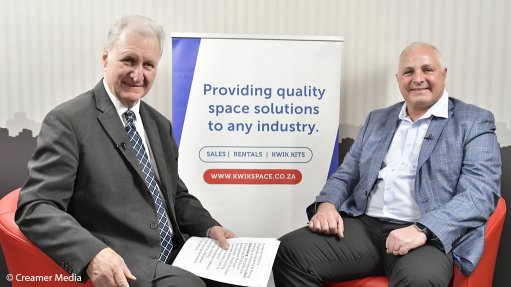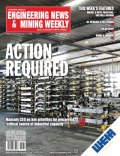S2 unpacks benefits of Orion’s new mine plan considerations
Market researcher S2 Research has published an updated valuation for ASX- and JSE-listed Orion Minerals at R1.16, or A$0.11, a share, compared with its current share price valuations of R0.34, or A$0.03.
The professional market research provider says Orion’s Prieska copper/zinc mine project is valued at about R8.5-billion after tax, which is a 21% increase on the evaluation it had prior.
Of this, about R6.6-billion is attributable to shareholders.
S2’s evaluation follows Orion announcing on January 20 that it will start a six-month technical investigation to optimise the life-of-mine plan of the Prieska project.
Specifically, the study will assess the potential for early access of both the openpit material (+105 Level Supergene orebody) and the mineralised remnant geotechnical pillars left in-situ.
Unpacking Orion’s latest project optimisation plans, S2 says there are substantial benefits to shareholders based on this new mine plan, including early access to cash flows from openpit and pillar mining, reduced total capital expenditure (capex) on account of a smaller tailings storage facility, and reduced upfront capex.
Additionally, S2 says reduced peak funding eases debt funding pressures and reduces the assumed equity raises.
EARLY ACCESS
The Orion technical study will look at mining the openpit +105 Orebody at a rate of 100 000 t a month from month 19 to 32 instead of at the end of the “Deeps – Foundation Stage”, which brings production forward by about 14 months.
The associated drilling programme is aimed at upgrading the +105 Level resources in support of the new mine plan.
Currently only 484 000 t of the 1.7-million tonnes of declared resources for the +105 Orebody have been upgraded to reserves. An underground drilling programme, starting later this month, is aimed at upgrading more of these resources, pursuant to the accelerated mining plan.
The drilling programme will also confirm the position and dimensions of the mined-out voids below the pit shell that will require backfilling ahead of the openpit extraction.
Subject to the success of the technical study, the +105 Level openpit project is to be brought forward and executed during the initial capital stage, specifically during the lead time of the underground dewatering and development activities.
Meanwhile, the drilling programme also serves to prove up resources available from the remnant geotechnical pillars left behind by the previous mine operator. More than two years of full production is estimated to be tied up in these pillars.
It is estimated that about 20% of the original orebody was left behind by the previous owners who relied on geotechnical pillars without backfill for underground support. S2 suggests that up to nine-million tonnes of in-situ material could be present that is not currently in the mining plan, which should translate to a 5.4-million-tonne reserve and add about two years of full production.
S2 assumes that production from pillar mining will replace production from the depleted +105 Orebody from month 29, and up to month 45, at which point production from the Deeps will start to ramp up.
First concentrate production from the Deeps orebody is now expected to ramp up from the end of year four, instead of the end of year three.
DEWATERING BENEFITS
Discussing the resultant benefits from Orion’s new mine plan considerations, S2 says the planned dewatering programme can be extended over a longer timeframe, as well as reduce the capacity of the tailings storage facility (TSF).
The dewatering programme for the main shaft was scheduled to run from month eight to month 22. The underground construction was due to start in month 21 in anticipation of mining and shaft hoisting in month 27.
With early access to the +105 Orebody and the ability to mine from the remnant pillars, the shaft dewatering programme is no longer a critical path element to first production.
Dewatering is now being considered over a longer period with modular plant increases as required. This reduces the upfront capital. An initial water treatment plant, at a third of original design capacity, is being considered for year one. This will have a related reverse osmosis circuit to produce agricultural-use water and an effluent storage dam for mine use water.
One benefit of this arrangement is that water pumped out of the shaft can be available for mine use contemporaneously at a volume that can be largely absorbed by mineral processing, mine back-filling and agricultural offtake as production ramps up, reducing the need for evaporation.
Originally, the TSF was a critical capex element to provide evaporation during dewatering. This will no longer be the case.
Once mineral processing starts, tailings will be directed towards back-filling both below the +105 Level orebody pit shell and into the voids associated with targeted remnant pillars on the upper levels. Much lower volumes of tailings will now need to report to the TSF, further reducing the TSF design capacity requirements.
With less evaporation and reduced unallocated tailings volumes than originally envisaged, the need for a large TSF as a critical path element is alleviated. “We think that the technical study is likely to conclude that a much smaller scale TSF is required and that it can be constructed later,” S2 states.
For the updated model, S2 has assumed that the TSF will be much reduced in scale and reduce the estimated capital cost by almost 50% from $21-million to $11-million.
Further, S2 has assumed that the overall cost of the modular water treatment plant and effluent dam remains the same and that it remains part of the “Operationalised Infrastructure” estimate that is expensed over the first eight years of the project.
In summary, S2 says the overall capex of R4.1-billion for Prieska will remain unchanged, but it will now be spent over four years instead of three, which reduces the early financing package requirements.
Comments
Press Office
Announcements
What's On
Subscribe to improve your user experience...
Option 1 (equivalent of R125 a month):
Receive a weekly copy of Creamer Media's Engineering News & Mining Weekly magazine
(print copy for those in South Africa and e-magazine for those outside of South Africa)
Receive daily email newsletters
Access to full search results
Access archive of magazine back copies
Access to Projects in Progress
Access to ONE Research Report of your choice in PDF format
Option 2 (equivalent of R375 a month):
All benefits from Option 1
PLUS
Access to Creamer Media's Research Channel Africa for ALL Research Reports, in PDF format, on various industrial and mining sectors
including Electricity; Water; Energy Transition; Hydrogen; Roads, Rail and Ports; Coal; Gold; Platinum; Battery Metals; etc.
Already a subscriber?
Forgotten your password?
Receive weekly copy of Creamer Media's Engineering News & Mining Weekly magazine (print copy for those in South Africa and e-magazine for those outside of South Africa)
➕
Recieve daily email newsletters
➕
Access to full search results
➕
Access archive of magazine back copies
➕
Access to Projects in Progress
➕
Access to ONE Research Report of your choice in PDF format
RESEARCH CHANNEL AFRICA
R4500 (equivalent of R375 a month)
SUBSCRIBEAll benefits from Option 1
➕
Access to Creamer Media's Research Channel Africa for ALL Research Reports on various industrial and mining sectors, in PDF format, including on:
Electricity
➕
Water
➕
Energy Transition
➕
Hydrogen
➕
Roads, Rail and Ports
➕
Coal
➕
Gold
➕
Platinum
➕
Battery Metals
➕
etc.
Receive all benefits from Option 1 or Option 2 delivered to numerous people at your company
➕
Multiple User names and Passwords for simultaneous log-ins
➕
Intranet integration access to all in your organisation






